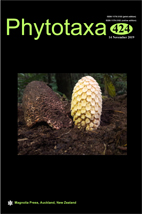Abstract
Didymosphaeriaceae is a cosmopolitan family of Ascomycetes including pathogens, saprobes, and endophytes living in a variety of substrates. While a monophyletic origin of the family is now widely accepted, the monophyly of some species, their worldwide distribution, and the timing of their origin is still disputed or unexplored. We first investigated Didymosphaeriaceae species diversity in six provinces of Iran with special focus on East Azarbaijan province: based on morphological features and analyses of concatenated internal transcribed spacer regions of the rDNA operon (ITS), large subunit rDNA (LSU) and beta-tubulin, only eight samples out of 1150 contained Didymosphaeroid fungi belonging to either Paraconiothyrium fuckelii or Kalmusia variispora; our sampling indicates 4 plants as new natural hosts of these fungi. We then performed an updated phylogenetic analysis of the Didymosphaeriaceae. Results indicate that the genera Paraconiothyrium and Kulmasia are polyphyletic as the likely result of previous species mis-assignments. We finally provided the first divergence estimates of the Didymosphaeriaceae using ITS. Bayesian relaxed clock analyses support an ancient (early Paleogene) origin of the family and a recent (late Neogene) diversification of extant genus compatible with a high loss of diversity in the past and/or of a still fragmented sampling of Didymosphaeriaceae diversity.

